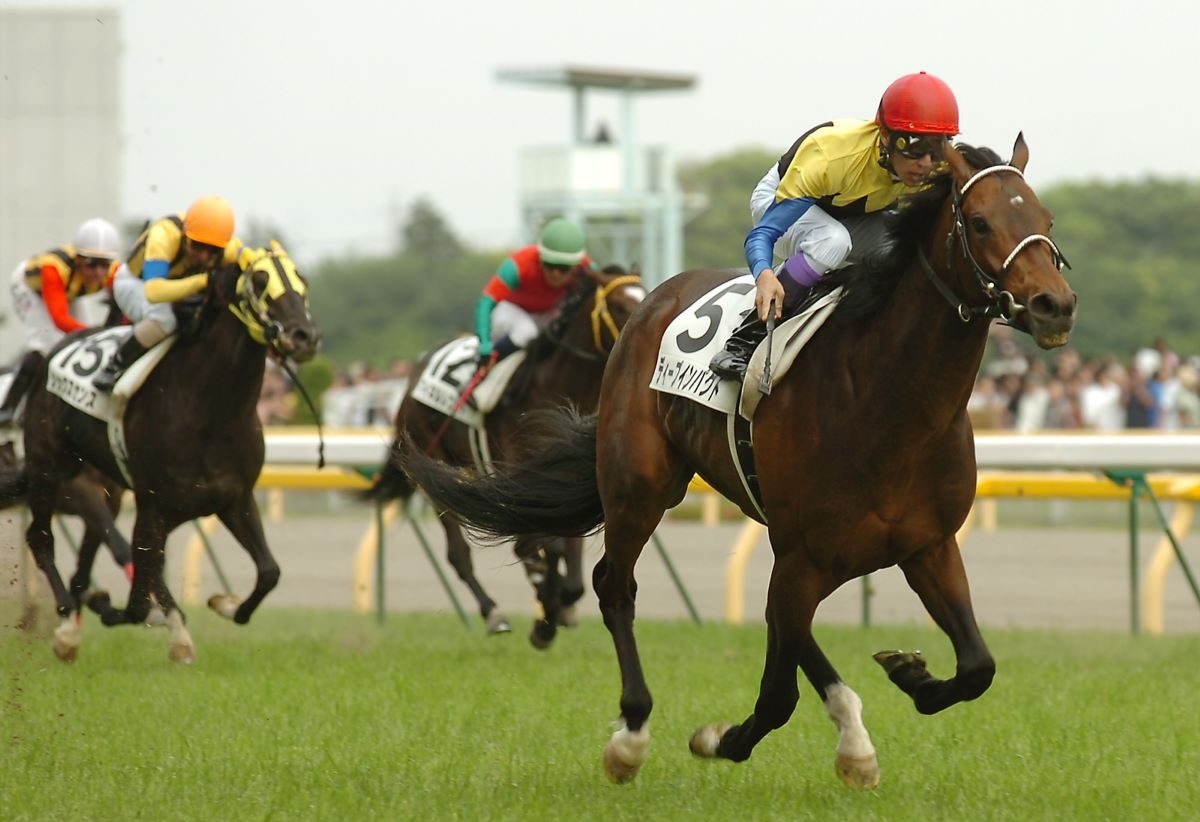
On April 30, Justin Palace, a progeny of Japanese thoroughbred Deep Impact, emerged victorious in the Tenno Sho (Spring). With this win, the legendary bay's progeny have racked up a total of 71 victories in Japan Racing Association (JRA) Grade 1 races.
In March, the cumulative number of JRA victories by Deep Impact's progeny had already reached an unprecedented 2,700 wins. That set a record for the fastest accumulation of wins for a sire's offspring in Japanese racing history.
Moreover, with Justin Palace's win in April, the bay thoroughbred's offspring equaled the JRA G1 record for the most grade one wins ever. (Previously the record was held by Deep Impact's sire, the legendary stallion Sunday Silence.)
But this story begins much earlier.
First of 2 Parts
In 2005 and '06, Deep Impact captured the attention of horse racing fans, winning 12 of 14 career starts, including the 2005 Japanese Triple Crown. Now his offspring are continuing his legend ー and taking it far beyond Japan.
Case in point: Auguste Rodin, winner of the 244th Betfred (Epsom) Derby at Epsom Downs in Surrey, England, on June 3. He is another Deep Impact offspring. Notable European filly Rhododendron is Auguste Rodin's dam.
Famous Irish trainer Aidan O'Brien, an eight-time Derby winner, was quoted as saying of Auguste Rodin: "He's totally unique, he's out of one of the greatest Galileo mares (Rhododendron) and by the greatest stallion ever in Japan."
What's more, he added, according to Racing Post, "I think [Auguste Rodin's] the most important horse we've ever had because he's bringing the two continents (Europe and Asia) together. And it's not fake ability. It's pure ability. So I think it is so exciting."
Auguste Rodin, foaled in January 2020, is one of Deep Impact's 13th and final crop of offspring.
Expectations are high for further accomplishments from this bloodline. In this article, the author who closely covered Deep Impact during his active career, seeks to once again explore what kind of horse he truly was.
Legendary Racehorse of the Heisei Era
On July 30, 2019, news of the death of the bay thoroughbred spread not only throughout Japan but also around the world, shaking the entire horse racing community. The name of this horse hailed as a hero was Deep Impact.
Despite his small stature, his explosive running style led his jockey, Yutaka Take, to describe him as "flying through the air." Fans admired his strength, became fervent supporters, and shed tears in defeat. As a stallion, he left behind numerous successors. Together, these have made the historic and iconic racehorse emblematic of the Heisei Era (1989-2019).
However, even in death, Deep Impact continues to captivate the hearts of fans.
The Making of a Legend
What is the allure of this horse that still resonates with so many?
The classic races, which only 3-year-old horses can participate in once in their lifetime, hold great significance. In the case of Deep Impact, all attention was focused on the way he won in the first leg of the Japanese triple crown, the 2005 Satsuki Sho (Japanese 2000 Guineas).
Deep Impact was strongly supported as the overwhelming favorite at odds of 1:3. However, an unexpected incident occurred at the start. As the gates opened, he stumbled, almost falling, and disrupted his posture, resulting in a significant delay in his start.
A crowd of 85,000 spectators filling the stands gasped in astonishment, foreseeing the worst-case outcome. The race continued amidst an extraordinary atmosphere of unrest, with murmurs persisting and an eerie mood enveloping the racetrack surroundings.
But as the horses turned into the final straight, the murmurs turned into thunderous cheers. Deep Impact, spurred on by Take's whip, showcased a different level of performance, surging from the outside with a remarkable speed that made other horses appear to be standing still.
With a commanding lead of two lengths, Deep Impact produced a resounding victory. Take, a masterful jockey, described Deep Impact's performance at that moment as "it felt like he was flying."
It was a truly remarkable display that set off a surge of excitement, marking a pivotal moment in the horse's extraordinary story.

A Trainer's Bold Prediction
In April 2004, at the Ritto Training Center in Shiga Prefecture, Yasuo Ikee stood in front of his prestigious stable, renowned in the Kansai region. As he looked at the list of horses scheduled to enter the stable, he made a prediction.
"This horse will become the flagship horse of our stable in the future," the acclaimed horse trainer declared at the time.
Known as a master horseman who has raised numerous famous horses such as Mejiro McQueen and Stay Gold, Ikee was also famous for being cautious and prudent. He was never one to make extravagant claims. Yet, even eight months before Deep Impact's debut, this trainer had noted the horse's exceptional talent.
Although at that time, the jewel that would shine at the highest level was still just a small rough stone, the trainer already had unwavering confidence in his potential.
For horse owner Makoto Kaneko, the encounter with Deep Impact was truly remarkable. It was love at first sight.
Kaneko said, "It was like being drawn into his eyes, and the profound impact stayed with me."
Deep Impact: An Investment with a Great Return
Thoroughbred horses of excellent lineage are traded for millions of yen. Deep Impact, listed as a 2002 offspring of Wind in Her Hair, was presented at the Select Sale, the largest domestic horse auction held at the Northern Horse Park in Hokkaido. Kaneko acquired Deep Impact through a successful bid of ¥70 million JPY (excluding tax), or about $700,000 USD.
Although it was not a small amount, Deep Impact could be classified as reasonably priced. His sire was the influential stallion Sunday Silence, who left a significant mark on the Japanese racing scene. And his dam was a German G1 racehorse. However, because he was small in stature, he was not particularly impressive in appearance.
Little did anyone know that Deep Impact would go on to achieve seven victories in G1 races, with lifetime prize earnings of ¥1,445,510,000 JPY (around $14 million USD). He would later become a historic champion and a highly sought-after stallion in a syndication deal worth ¥5.1 billion JPY (about $51 million USD).
Kaneko named him Deep Impact with the wish to "make an impact on the racing world."
The uncommon history of this exceptional racehorse began with that fateful love at first sight.
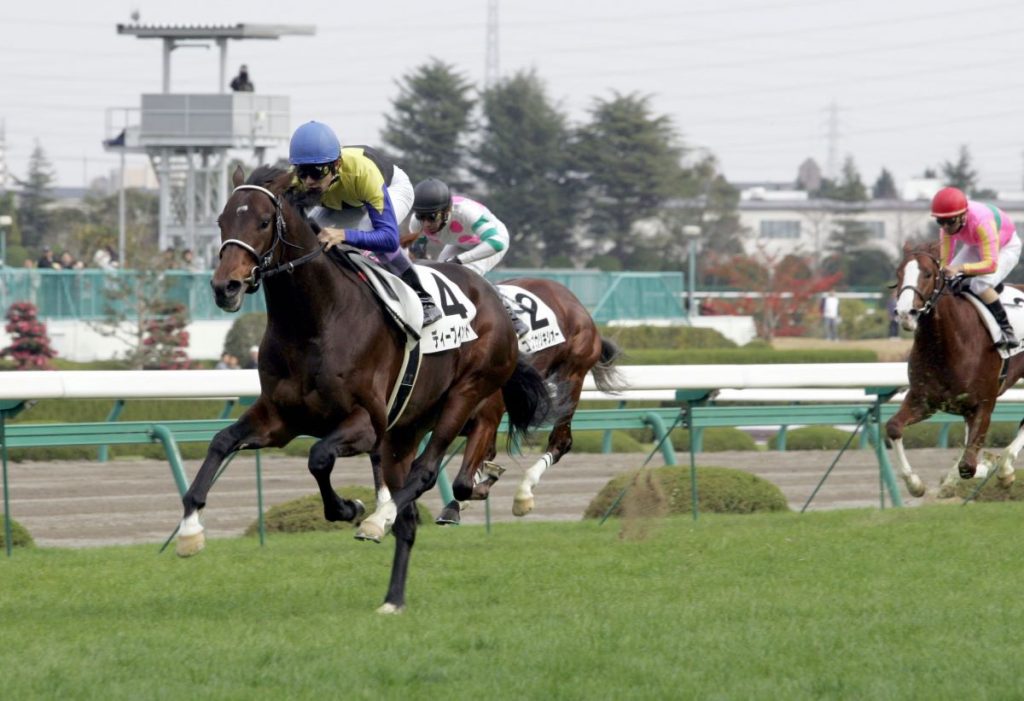
An Insatiable Love of Running
During his early days on the stud farm, Deep Impact's physique didn't develop as quickly as expected, and his overall maturity was slightly delayed. Nevertheless, he loved to run, and every day he would gallop around the pasture to the point where his hooves were covered in blood.
As his training advanced, Deep Impact's exceptional talent started to manifest. Riders marveled at his ability to "bounce like a rubber ball," showcasing remarkable rideability.
Most horses can only run in a straight line, but such was the agility of Deep Impact, with joints as supple as those of a feline, that there were anecdotes of him being able to move laterally.
"That horse is incredibly light and has a spring like no other," Ikee observed at the time.
Even Ikee, while inspecting the horses at the stud farm, was fixated on this small but promising gem.
Deep Impact arrived at Yasuo Ikee's Ritto Training Center stable in Shiga Prefecture on September 8, 2004. The horse made a striking impression with its sleek coat, slender physique, and clear gaze. Akihiko Ichikawa, the assigned stable keeper, couldn't resist taking a peek between the horse's legs.
"He was so adorable and gentle. I had to double-check if it's a filly," said Ichikawa.
Deep Impact was remarkably easy to handle.
Demonstrating True Potential
The "filly-like colt" revealed his true potential on the racetrack three months later, on December 19. With a gentle urging in the home stretch, he stormed to a resounding victory.
Even prior to Deep Impact's debut, Take had hailed the horse, declaring, "He is an extraordinary horse with astonishing speed."
Nevertheless, his winning performance surpassed all expectations.
From then on, Deep Impact charged forward on a winning streak.
Following his victory in the Satsuki Sho, Deep Impact went on to conquer the Tokyo Yushun (Japanese Derby) and the Kikuka Sho (Japanese St. Leger), maintaining his unbeaten record. He became the second horse in history, after Symboli Rudolf in 1984, to achieve the remarkable feat of winning all three classics undefeated.
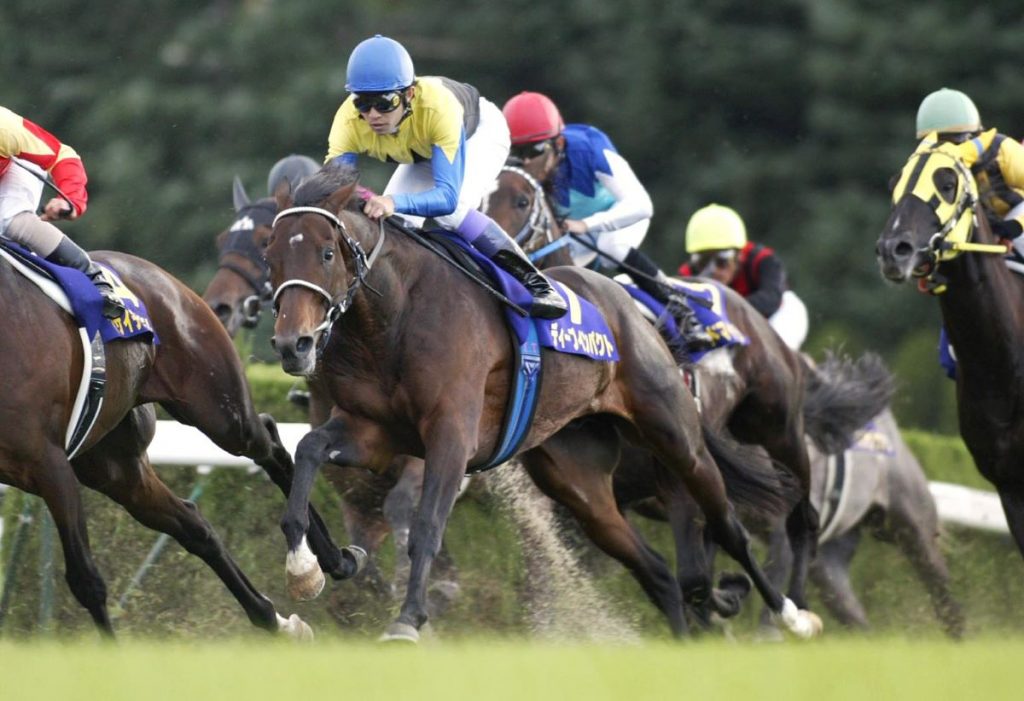
Racing among horses weighing over 500 kilograms, Deep Impact, a relatively small colt with a body weight of around 440 kg, unleashed an extraordinary burst of speed, overtaking other horses in the blink of an eye in the home stretch. Fans were thrilled by his exciting racing style.
Deep Impact's Incredible Popularity
His "flying run" was scientifically analyzed, generating interest. And thereafter the Kikuka Sho drew a record-breaking attendance of 136,701 spectators.
With a record-breaking single-win support rate of 79.03% and odds of 1.0 (winnings are equal to what you pay), Deep Impact became the most heavily favored horse in history.
Even though fans knew they wouldn't make a profit, they still purchased win tickets as a commemoration. Beyond the racetrack, Deep Impact generated various social phenomena. Special programs featuring the horse were even broadcast on NHK.
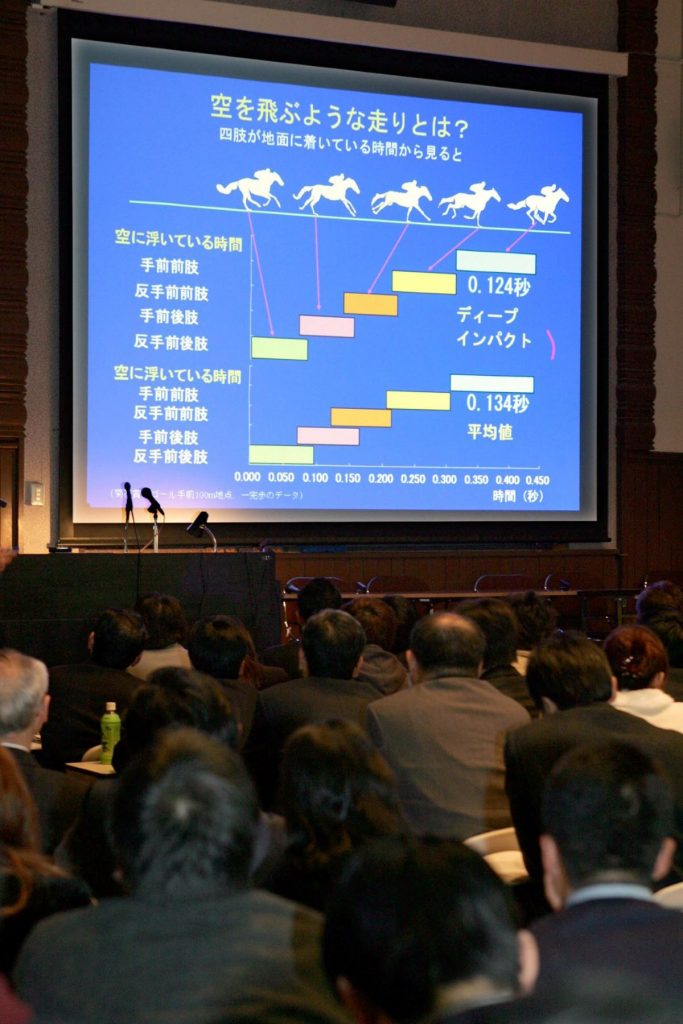
Deep Impact: The 'Young Master'
The astonishing effortless burst of speed that carried him to overtake other horses from behind in the last stretch was truly remarkable. Not only were people taken aback by his breathtaking performance, but they were also surprised by his behavior at training centers.
Among strong racehorses, many display tension and intimidation or become frustrated and fed up with training. However, Deep Impact was intelligent and obedient, as if to signal "racing and training are separate."
He was always composed and efficient, never wasting any energy. Even in the presence of humans, he never showed aggression. Instead, he wore a soft and welcoming expression, and eagerly awaited his favorite treat: carrots. Quick to learn, he effortlessly grasped the instructions given by the stable staff, earning the endearing nickname "Young Master" due to his famous lineage and well-behaved nature.
While he was a formidable force on the racetrack, within the stable Deep Impact transformed into a disciplined student. This striking contrast between his personas was both captivating and the secret to his remarkable success.
About the Horse: A Closer Look at Deep Impact
Deep Impact, a bay thoroughbred racehorse, was born on March 25, 2002, at Northern Farm in Hayakita Town (now Abira), Hokkaido. He was sired by Sunday Silence and his dam was Wind in Her Hair, with Alzao as his broodmare sire. Makoto Kaneko Holdings was his owner. Throughout his racing career, he was trained by Yasuo Ikee at the Ikee Stable in Ritto, Shiga Prefecture. He participated in 14 races, achieving an impressive record of 12 wins, one second-place finish, and one disqualification (including an unsuccessful race overseas).
Deep Impact received numerous accolades. He was crowned the JRA Horse of the Year and Best Three-Year-Old Colt in 2005, Horse of the Year and Best Older Male Horse (four years old and above) in 2006, and received the JRA Special Award in 2008. In July 2005, he became the first Japanese horse to attain the top position in the international rankings.
RELATED:
- (Second of 2 Parts): Deep Impact: Continuing Influence of a Beautiful Horse
- [ODDS and EVENS] Horse Racing Bloodlines of the Japan Cup
Author: Yasuyuki Suzuki
(Suzuki is a veteran sports journalist. He was the reporter in charge of Deep Impact coverage at Weekly Gallop during the horse's active years.)
Editor's note: The content of this article has been augmented using material from a 2020 article by Sankei Sports ZBAT!.

Nagoya Basho Tournament Records
| Day | Opponent | Result |
|---|

















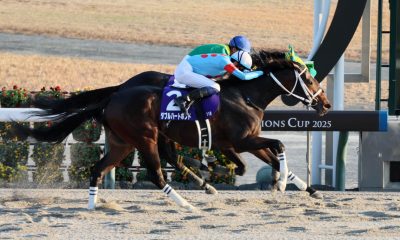
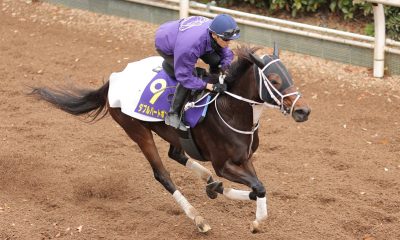
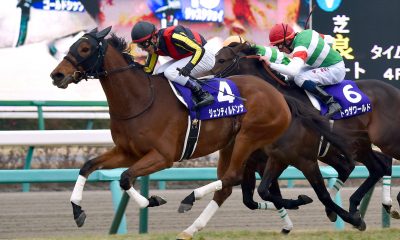

You must be logged in to post a comment Login